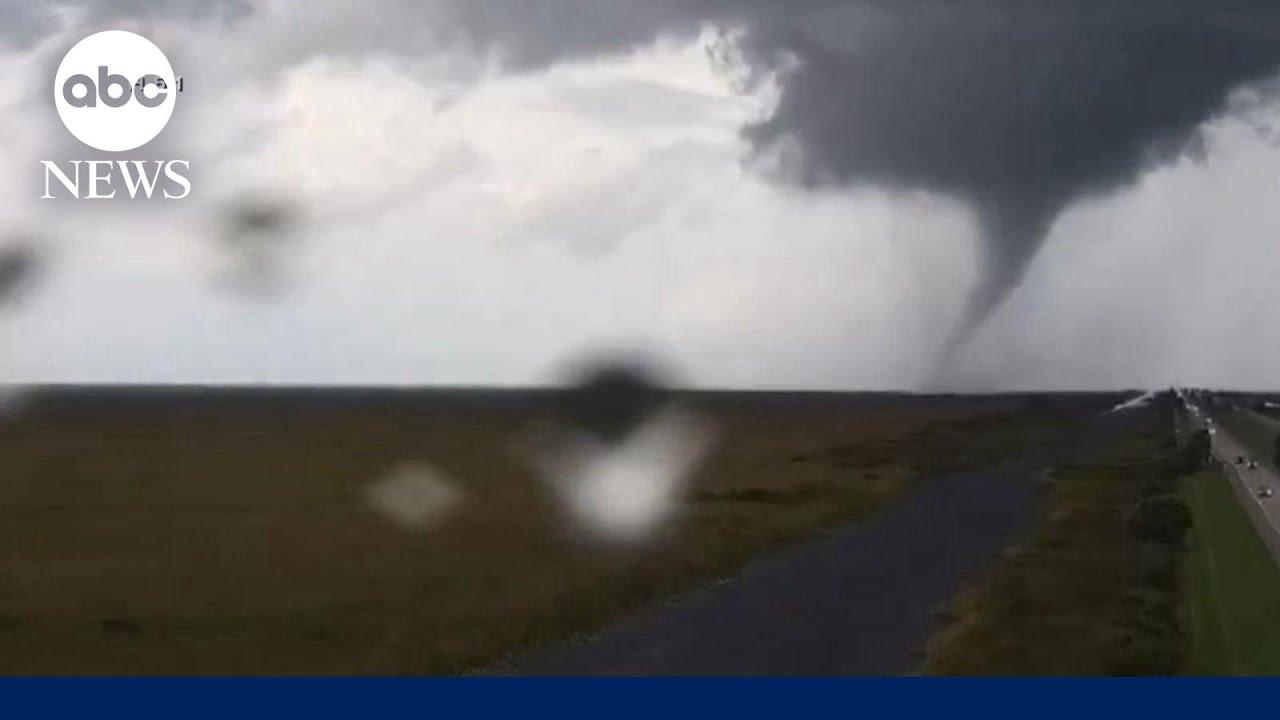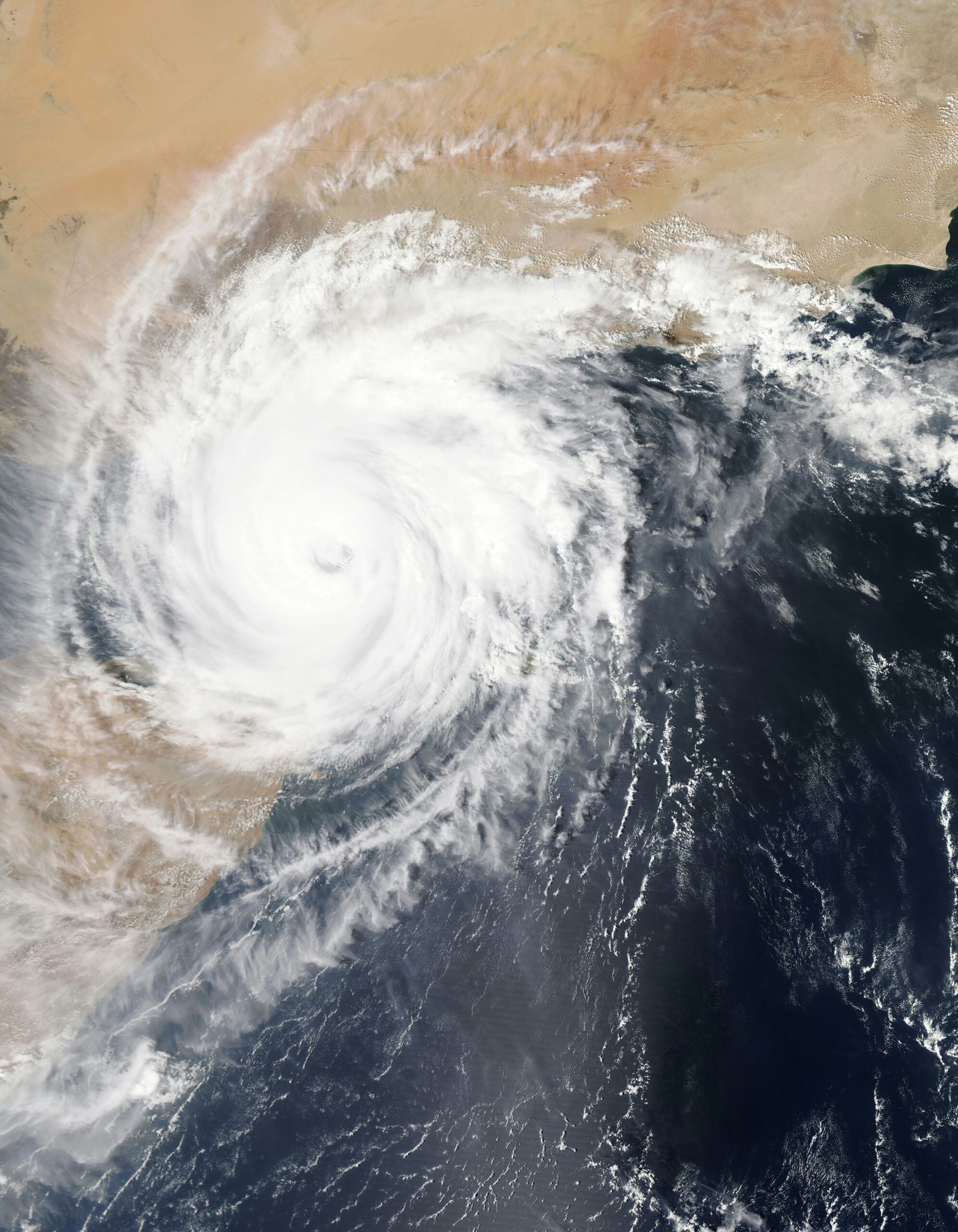Introduction to Hurricane Milton Orlando
Hurricane Milton Orlando emerged as a notable weather event that highlighted the complexities and dangers associated with hurricanes. Originating from a tropical disturbance in the warm waters of the Atlantic Ocean, Milton quickly gained strength and was classified as a major hurricane. The dynamics of its development included favorable atmospheric conditions, such as low wind shear and warm sea surface temperatures, which allowed it to evolve into a significant threat.
As Hurricane Milton Orlando approached the coast of Florida, it became apparent that Orlando, a bustling urban area known for its tourism and vibrant community, was within its potential impact zone. Hurricanes classify into categories based on their wind speeds and the potential damage they can cause. Milton fell into a category that posed substantial risks to both life and property, making the need for preparedness critical.
Understanding hurricanes like Milton is essential, especially for residents and stakeholders in urban settings such as Orlando. The potential dangers include severe wind damage, flooding, and disruptions to essential services. Urban areas, with their dense populations and infrastructure, face unique challenges during hurricane events. Consequently, it becomes crucial to develop effective emergency management strategies to mitigate the risks associated with hurricanes.
Moreover, Hurricane Milton Orlando underscores the significance of public education and awareness regarding hurricane preparedness. Preparing for such events involves not only securing properties and having emergency supplies on hand but also understanding evacuation routes and community resources available during a disaster. As climate patterns evolve, the frequency and intensity of hurricanes, including storms like Milton, may also change, making this knowledge increasingly vital for residents of Orlando and surrounding areas.
The Path of Hurricane Milton

The trajectory of Hurricane Milton Orlando as it approached Orlando was a subject of keen interest for meteorologists and residents alike. Understanding the path of such a powerful storm is crucial for effective preparations and response. The journey of Hurricane Milton began in the Caribbean, where it formed and gained strength before heading towards the Florida coast.
Forecasting methods employed during this event included satellite imagery, radar data, and computer simulations. These tools enabled meteorologists to predict the path and intensity of Hurricane Milton Orlando with a considerable degree of accuracy. As the storm approached, updated forecasts consistently warned of the potential for severe weather in Orlando, prompting local authorities to issue timely alerts.
The timeline of warnings associated with Hurricane Milton Orlando is a vital aspect of how the situation unfolded. Initial advisories indicated a possible shift in the storm’s trajectory, heightening the urgency for residents to prepare. As the hurricane neared landfall, updates became more frequent, providing critical information on expected wind speeds, rainfall, and potential flooding. These warnings allowed residents in Orlando to take necessary precautions, such as securing their homes, stocking up on supplies, and developing emergency plans.
Local authorities played an instrumental role in disseminating information regarding Hurricane Milton Orlando. By partnering with meteorological agencies, they were able to relay the forecasts and emergency guidelines to the public effectively. This proactive approach not only helped to increase awareness of the hurricane’s potential impact but also fostered a sense of community resilience. Ultimately, the combination of advanced forecasting methods and clear communication was pivotal in helping residents of Orlando navigate the challenges posed by Hurricane Milton.
Impact on Orlando’s Infrastructure

The infrastructure of Orlando faced significant challenges due to Hurricane Milton Orlando. As the storm approached, local authorities undertook preemptive measures to secure buildings and utilities. However, upon landfall, the hurricane unleashed damaging winds and torrential rain that led to widespread destruction across the region. Notably, residential and commercial structures reported severe damage, with roofs torn off and windows shattered. In many areas, entire neighborhoods were left without power as utility poles were downed, leading to prolonged outages.
According to estimates, nearly 40% of the city experienced disruptions in electricity service, impacting thousands of residents and businesses. Emergency response teams from the local government and utility companies worked tirelessly to assess the damage and restore connectivity, yet the scale of the damage was considerable and required careful planning for recovery. Reports indicated that some roadways became impassable due to debris and flooding, further complicating rescue and recovery efforts. In some instances, essential routes used by emergency responders were blocked, necessitating the redistribution of resources to reach affected residents efficiently.
In response to the devastation caused by Hurricane Milton Orlando the city launched an extensive infrastructure recovery plan. Local government agencies collaborated with state and federal resources to secure funding aimed at repairing damage to roads, bridges, and public transit systems. Furthermore, utility companies prioritized restoring services to essential facilities, such as hospitals and emergency services, to ensure public safety amidst ongoing turmoil.
Overall, the impact of Hurricane Milton Orlando on Orlando’s infrastructure highlighted both vulnerabilities and the resilience of the community. The aftermath spurred discussions on enhancing preparedness for future storms, with stakeholders recognizing the need for improvements in both physical infrastructure and emergency response protocols. As the city moves forward, lessons learned from this hurricane will inform future developments to better withstand potential natural disasters.
Emergency Preparedness for Residents

As Florida continues to face the threats posed by hurricanes, the residents of Orlando must remain vigilant and well-prepared. Hurricane Milton Orlando serves as a recent example of the potential impact significant storms can have on the region. Preparedness is not only about individual readiness but also involves community engagement to ensure safety as a collective.
The first step in hurricane preparedness is creating a comprehensive emergency kit. This kit should include essential items such as non-perishable food, water (one gallon per person per day for at least three days), medications, personal hygiene products, flashlights, batteries, and first aid supplies. Additionally, it is advisable to include important documents, such as identification and insurance information, in waterproof containers. Completing this list well before any hurricane threat, including Hurricane Milton Orlando, helps alleviate stress when a storm approaches.
Equally vital is formulating an evacuation plan. Residents should familiarize themselves with local evacuation routes, as well as designated shelters. Keeping a contact list of family members and friends will ensure effective communication should an emergency unfold. It is beneficial to practice this plan in advance so that all family members understand their responsibilities and actions during a hurricane evacuation, particularly in the event of a storm similar to Hurricane Milton Orlando.
Securing property is another critical aspect of hurricane preparedness. Homeowners should assess their properties and consider reinforcing windows and doors with storm shutters or plywood. Landscaping should be maintained to eliminate any loose debris that high winds can turn into projectiles. Furthermore, it is essential for residents to stay informed through reliable weather updates and have access to community resources for readiness information.
Ultimately, by focusing on these measures—creating emergency kits, developing evacuation plans, and securing properties—Orlando residents can enhance their resilience against hurricanes, including those encapsulated by the experiences surrounding Hurricane Milton Orlando.
Aftermath and Recovery Efforts

In the aftermath of Hurricane Milton Orlando in Orlando, the city faced extensive challenges as residents and authorities began the long journey toward recovery and restoration. The devastation caused by this natural disaster prompted a coordinated response effort involving local, state, and federal agencies to ensure that affected populations receive essential support. The Federal Emergency Management Agency (FEMA) played a vital role in extending assistance to the most severely impacted areas, facilitating access to critical resources, including financial aid for housing, temporary rental assistance, and low-interest loans for repairs and rebuilding.
Local authorities organized recovery initiatives to support the community and help residents return to normalcy. These initiatives included the establishment of disaster recovery centers throughout Orlando, where residents could receive direct guidance on assistance programs, complete applications for aid, and access mental health resources. The commitment of local businesses and community organizations to assist their neighbors also showcased the resilience of the Orlando community. Fundraising campaigns, donation drives, and volunteer programs sprang up rapidly to provide the necessary supplies and services for those in need.
The timeline for rebuilding and restoration efforts in Orlando following Hurricane Milton Orlando is expected to be extensive, as the magnitude of damage will require a methodical approach. City planners and recovery experts project various phases, starting with immediate debris removal and restoration of essential services such as electricity and water supply. Following these initial phases, longer-term rebuilding projects will be prioritized based on community needs and resource availability. Through these comprehensive recovery efforts, the people of Orlando can look forward to rebuilding their lives while ensuring that the lessons learned from Hurricane Milton will inform future disaster preparedness initiatives to mitigate the impact of potential storms.
Personal Accounts and Experiences

Experiencing Hurricane Milton Orlando in Orlando was a profound moment for many residents, bringing with it a mix of fear, uncertainty, and an unexpected display of community solidarity. One resident, Clara, recalls the anxiety that swept through her neighborhood as the storm approached. “We all gathered in the local community center, which had become our makeshift hurricane shelter. The atmosphere was tense, but it quickly turned into something remarkable,” she shares. Clara recounts how neighbors who barely knew each other before the storm came together to share supplies, comfort one another, and support those who were most anxious.
Another resident, John, recounts the fierce winds and relentless rain. “It felt like nature was unleashing its fury. I could hear the howling winds that sounded almost like voices pleading for mercy. It was surreal,” he says. John emphasizes the importance of being prepared, having taken steps beforehand to secure his home and ensure his family would stay safe. Post-storm, John reflects on the significant damage but also the resilience displayed by everyone around him as they worked together to restore their community, collecting debris and helping those whose homes had sustained the worst damage.
During this time, stories emerged not just of loss but also of hope. Emily, a local business owner, shares how she opened her shop to provide free meals for those in need. “My store became a hub of warmth and nourishment. We all needed each other,” she reflects. This sentiment was echoed by many residents in Orlando, who turned personal experiences into collective strength. Hurricane Milton Orlando, while a formidable force, revealed the spirit of the Orlando community, reminding everyone that in the face of adversity, humanity can shine brightly, fostering a sense of unity and resilience that will last long after the storm has passed.
Long-term Effects on the Community

The aftermath of Hurricane Milton Orlando in Orlando is not only measured in immediate damage but also in long-lasting community effects. Economic impacts are an essential aspect of this evaluation. The destruction inflicted by the hurricane led to significant disruptions in local businesses and employment. Many establishments were forced to close temporarily or even permanently, resulting in job losses and a decrease in disposable income for residents. This economic downturn can lead to a slow recovery, as the city faces the challenge of revitalizing its business environment.
Furthermore, Hurricane Milton Orlando has psychological effects on the residents of Orlando that may linger long after the physical scars have healed. The trauma associated with experiencing such a powerful storm can result in anxiety, depression, and other mental health concerns for many individuals. Community support systems, such as counseling services, have become critical in aiding residents to navigate the emotional fallout from the hurricane. Public awareness campaigns about mental health resources and resilience strategies are increasingly becoming a focus for community leaders.
The impact of Hurricane Milton Orlando could also be seen in changes to urban planning and development strategies within Orlando. The city has begun to implement more rigorous building codes and environmental regulations designed to mitigate the effects of future storms. Urban planners are exploring innovative designs to create flood-resistant infrastructures, such as enhanced drainage systems and resilient public spaces. In addition, some neighborhoods are being redeveloped with a focus on sustainability, ensuring that the community is better equipped for future hurricane events.
Such initiatives indicate a strong shift towards community preparedness and adaptation strategies. As the residents of Orlando navigate the aftermath of Hurricane Milton Orlando, the collective focus shifts from recovery to resilience, ensuring the community is better prepared for future hurricanes and associated challenges.
Future Hurricanes: Lessons Learned

The aftermath of Hurricane Milton Orlando in Orlando has provided crucial insights that can enhance our approach to future hurricanes. One of the primary lessons is the importance of technological advancements in predicting and managing hurricanes. The utilization of satellite imagery, predictive modeling, and early warning systems has substantially improved since previous hurricane events. These technologies enable meteorologists to track storms with greater accuracy, which can significantly reduce response times for evacuation and resource allocation. As developments continue, it is imperative that communities remain informed about these advancements and how to access pertinent information during a hurricane event.
Another significant lesson from Hurricane Milton Orlando is the vital role of community awareness programs. Educating residents on preparedness strategies such as evacuation routes, emergency kits, and sheltering procedures ensures that communities are better equipped to respond to hurricanes. Local governments can foster resilience by sponsoring workshops and disseminating educational materials that emphasize the importance of readiness. Programs that involve local schools, businesses, and neighborhood associations can increase participation and enhance collective preparedness, potentially saving lives during future storms.
In addition to education, Hurricane Milton Orlando has illustrated the need for comprehensive policy changes that focus on disaster preparedness. Legislators must prioritize funding for infrastructure improvements designed to mitigate hurricane damage, such as enhancing drainage systems and reinforcing building codes. Policies that focus on climate change adaptation can also contribute to the resiliency of communities against the increasing severity of storms. By reflecting on the experiences gained from Hurricane Milton, policy-makers can implement measures that not only improve immediate response but also build long-term resilience against future hurricanes.
These lessons highlight the multifaceted approach needed for hurricane preparedness and response. By leveraging technology, enhancing community involvement, and pursuing effective policy changes, we can create a more resilient environment capable of withstanding the impacts of future hurricanes like Milton.
Conclusion: The Importance of Hurricane Awareness
Hurricane Milton Orlando serves as a crucial reminder of the ever-present risks associated with severe weather events. Throughout this guide, we have explored the various aspects of hurricane preparedness, the regional impacts specific to Orlando, and the community’s role in ensuring resilience against such disasters. Understanding the dynamics of hurricanes, particularly those that may affect Orlando, is essential to safeguarding lives and property.
Preparation is multifaceted and requires concerted efforts from both individuals and community organizations. By establishing emergency plans, creating communication strategies, and fostering community involvement, Orlando residents can better equip themselves to face the challenges posed by hurricanes. We have emphasized the importance of staying informed about evolving weather conditions and understanding local resources available for assistance during these critical times.
Moreover, emergency response strategies are significantly enhanced when community members actively participate in preparedness initiatives, including workshops, drills, and informational sessions. Each resident’s proactive approach contributes to a collective strength that is vital in times of crisis, particularly when the threat of hurricanes looms overhead. Knowledge-sharing within neighborhoods fosters a supportive environment where people can rely on one another for assistance.
As we reflect on Hurricane Milton Orlando Hurricane Milton Orlandopotential impact, it is evident that awareness should not end with the hurricane season. Continuous education and readiness throughout the year can substantially minimize risks and enhance recovery efforts post-storm. The commitment to staying vigilant and informed is integral to Orlando’s resilience against hurricanes, reaffirming that preparedness is an ongoing responsibility for everyone in the community. The lessons learned from Hurricane Milton can only serve to strengthen our collective response and recovery for future storms.






